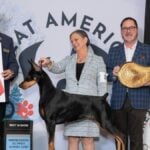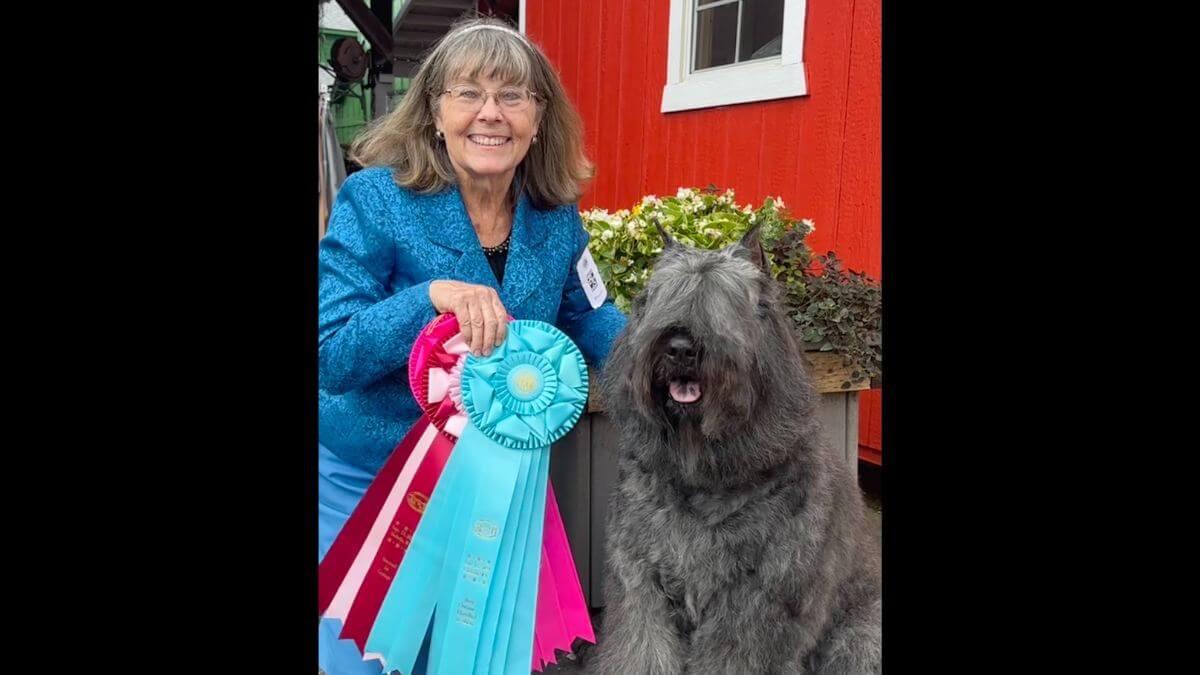


Home » Cheryl Calm | Calm Bouviers

Cheryl Calm
1. I live near Portland, Oregon, attending most dog shows in Oregon, Washington, and Idaho. I’ve shared my life with Bouvier des Flandres since 1976 after growing up in Dog 4-H Obedience and Junior Showmanship. I began Calm Bouviers in 1980 and continue a limited breeding program aimed at bringing each generation closer to my vision of the AKC Bouvier Breed Standard.
2. There are several concerning trends away from our Standard:
3. Too many judges make choices based on the previous days’ winners, with the same four dogs placing in Groups at a cluster where the quality is deep. With the number of entries dropping, it’s common to see judges trying to sort through Bouviers of poor type and motion with no choices of true quality. They hand out the ribbons and points, producing champions that are bred and produce more like themselves. It’s hard for the judging to be good when the entry is mediocre. Those coming up need to learn from preservation breeders and understand what the Standard creates and why. The current show system does not encourage judges to be part of the learning process. There’s no opportunity for judges to explain their choices—and when asked, few will give an answer worthy of the question. The number of shows is okay. You can choose how many you go to.
4. I fully support all performance events as they give dogs an opportunity to show they can do what they’re bred for. They also strengthen the owner/dog connection.
5. When used in a positive manner, social media is good. It’s a great forum for sharing information, helping others to learn, get answers to questions about shows, training, and whelping, and sharing the joy of time spent and success with your dogs. It keeps us in touch no matter where we are. However, when social media is used to bully, criticize, or pass false rumors it’s good for no one. Pass by those posts. Engaging just fans the flames.
6. The biggest challenges are dwindling numbers of breeders, fewer volunteers to run clubs, declining entries, some judges favoring handlers, which discourages new exhibitors, and a diminishing pool of quality judges. These problems can be addressed in part by current breeders, club members, and exhibitors welcoming and helping new people. AKC, judges, and clubs must create a culture that clearly supports rewarding the best dogs (based on Breed Standards) and not just well-known professional handlers and faces showing whichever dog “won yesterday.” We need quality testing and review processes by AKC to catch and help those judges needing more education in a breed.
7. Grand Championship levels and NOHS have given people a reason to keep showing. It gives owners more chances at success and ways to count your dog’s points. More happy owners and dogs leads to continued involvement in our sport.